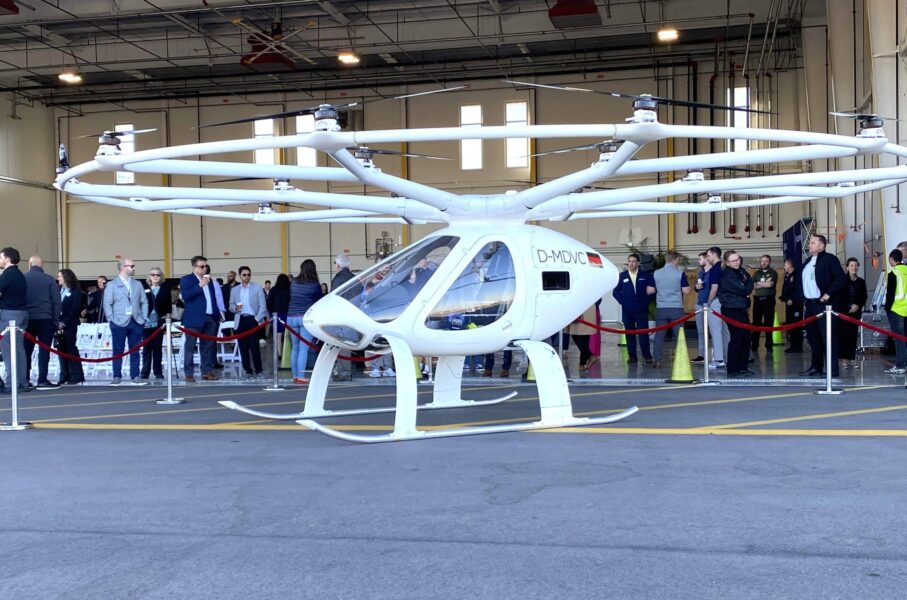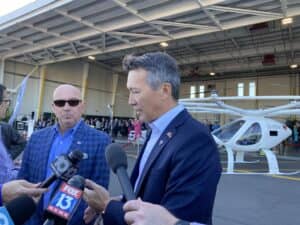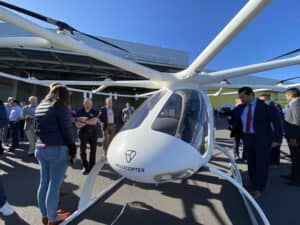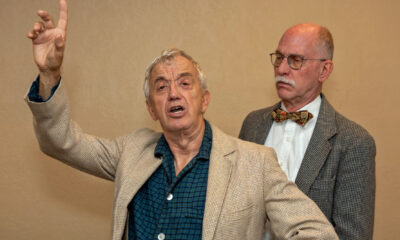Innovate
Tampa hosts Florida’s first air taxi test flight

Soaring above the Sheltair aircraft hangar in downtown Tampa Thursday morning, a German-made air taxi made the first-ever flight test of an electric vertical takeoff and landing aircraft in the state.
Volocopter’s air taxis, described as a cross between helicopters and drones, can support a limited number of passengers and cargo.
The company classifies its product as an eVTOL, a new category of aircraft that focuses on short- to medium-range flights powered by electric propulsion.
View this post on Instagram
“Over 100 years ago, we had the first commercial flight in the world from St. Pete to Tampa flown by [American pilot] Tony Jannus – what better way to demonstrate innovation with this new aircraft,” Tampa International Airport (TPA) CEO Joe Lopano said. “We need mobility. This will go above all the traffic and take you where you need to go within the city.”
Volocopter CEO Dirk Hoke said Tampa was not on his radar as he was planning to test the tech in Las Vegas and Dallas, Texas; however, Lopano reached out to him about testing the Volocopter on the TPA-controlled property.

Tampa International Airport CEO Joe Lopano (left) and Volocopter CEO Dirk Hoke during the flight test event.
“We are here also because we want to have discussions about production in the U.S.,” Hoke said.
The next generation of air taxis could expand to hold four or five passengers as battery power evolves.
Hoke explained the two-passenger Volocopter checks off the same safety guidelines commercial aircraft are required to meet.
The company expects to receive a final certification of its commercial eVTOL aircraft, the VoloCity, from the European Union Aviation Safety Agency (EASA) next year. Hoke said operations would initially start in France and Italy.
In 2020, Volocopter submitted a certification application to the U.S. Federal Aviation Authority. The application is currently pending approval.

Attendees circle Volocopter’s white air taxi after the flight demonstration.
Hoke also mentioned how there could be potential partnerships with commercial airlines in connecting passengers to intercity destinations.
“This is going to be a reality for us really soon,” Lopano said. He hopes the flights could commence in 2025 or 2026.
TPA’s newly drafted 20-year master plan calls for the development of vertiports, or helipads, for future air taxis. Vertiports can be constructed on rooftops of buildings, Hoke said, as long as there’s an electrical charging source.
Earlier this year, the plan showed TPA’s two preferred vertiport sites: One at the intersection of West Tampa Bay Boulevard and Airport Service Road and another at the intersection of Jim Walter Boulevard and West Columbus Drive.
“Economic mobility depends on transportation – that means having multimodal options for our residents to connect to business and leisure opportunities through Tampa Bay and beyond,” St. Petersburg Mayor Ken Welch said at the event. “Transportation mobility is one of the last great challenges to our emergence as an economic super region.”
Local transit leaders previously said air taxis could travel from TPA to St. Pete’s Albert Whitted Airport in eight minutes.







